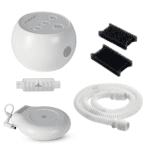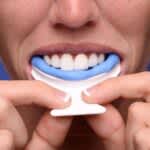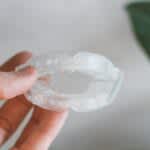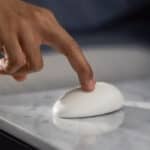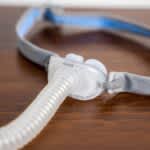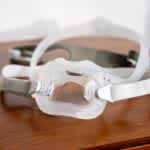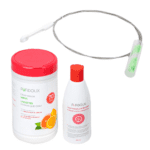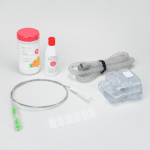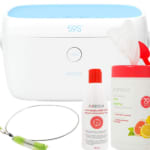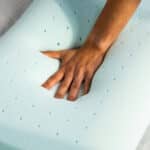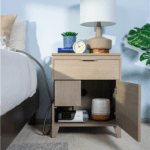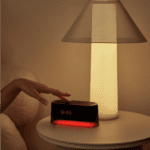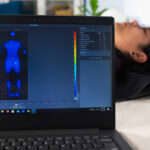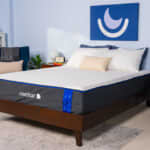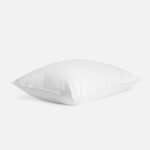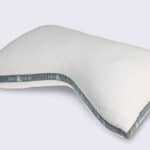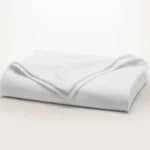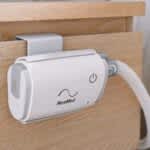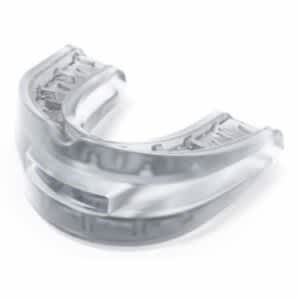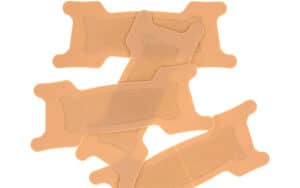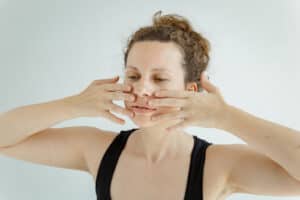In the U.S., up to 17% of young children have been found to snore at least occasionally. A lesser number snore habitually, which is defined as three or more times per week. Snoring happens when tissues in the throat, mouth, or nose vibrate as a sleeping child breathes.
Parents and caregivers may wonder if their child needs medical attention for snoring. When a child snores, they should see a doctor. Loud or habitual snoring may indicate a child has a sleep disorder called obstructive sleep apnea.
Do All Children Snore the Same?
Children vary in how frequently and loudly they snore, as well as how disruptive snoring is to their sleep. Many children snore only on occasion, while others snore multiple nights per week. When a child’s snoring stems from an underlying sleep disorder, it may be accompanied by other sounds like loud mouth breathing, coughing, or choking while asleep.
Causes of Snoring in Children
A variety of factors can increase the likelihood that a child will snore. Physical characteristics of the head and neck, family history, and environmental factors can play a role in whether or not a child snores. Snoring can also arise because of a sleep disorder or other health condition such as allergies or inflammation.
Enlarged Tonsils or Adenoids
Enlarged tonsils or adenoids, groups of tissues present in the throat and behind the nasal cavity, may cause some children to snore. A child’s tonsils and adenoids could be naturally larger than normal, with no underlying problem. They could also become enlarged as the result of a throat infection or allergies.
Most children with enlarged tonsils and adenoids don’t require treatment. However, surgery to remove the tonsils, adenoids, or both may be recommended if they are causing health issues for the child that can’t be successfully treated through other means. In children, enlarged tonsils and adenoids are common causes of the sleep disorder obstructive sleep apnea (OSA).
Obesity
Snoring is closely related to obesity in children. In children with obesity, fat around the throat might physically narrow the airway during sleep. As a result, children with obesity are more likely to experience obstructive sleep apnea and related symptoms like snoring. In fact, the most common cause of childhood OSA is obesity.
Obstructive Sleep Apnea
Loud and habitual snoring, which occurs three or more nights per week, are common symptoms of obstructive sleep apnea in children. Between 1% and 5% of children develop OSA. While the disorder can affect children of all ages, it appears more often between the ages of 2 and 6.
When a child has obstructive sleep apnea, they stop breathing at times as they sleep. To diagnose the disorder, a doctor usually requests a child undergo an overnight sleep study, often in a sleep lab.
Reporting snoring as a symptom can help doctors identify OSA in children. OSA is underdiagnosed and rarely diagnosed early. Diagnosing and treating OSA in children is important, because the disorder can lead to trouble learning, behavior problems, slowed growth, and other health issues.
In addition to snoring, symptoms of OSA in children often include:
- Restless sleep
- Mouth breathing while awake or asleep
- Pauses in breathing during sleep
- Bed wetting or frequent nighttime trips to the bathroom
- Sleepwalking
- Difficulties at school
- Behavior issues
- Sleepiness during the daytime
- Morning headaches
Allergies, Asthma, and Sinus Inflammation
Inflammation can cause swelling of the tissue that lines the sinuses, which are spaces in the face that connect with the nose. Inflammation of the sinuses caused by allergies and infection can increase the risk for snoring in small children. Children with asthma, especially those whose asthma is poorly controlled, are also at higher risk of developing OSA.
Family History
A child’s family history plays a role in their likelihood of being a habitual snorer. When parents snore, their children face a higher risk of snoring. Obesity, face shape, and the regulation of breathing are traits linked to genetics. These traits could also help explain why children are more likely to develop OSA if a family member has the disorder.
Air Quality
The air quality of a child’s environment can influence whether or not they snore. For example, there are higher rates of snoring among children living in neighborhoods with lower air quality. Similarly, exposure to secondhand cigarette smoke can irritate the throat and put children at risk of OSA.
Face Anatomy
The way bones, muscles, and nerves are arranged in a child’s face can make snoring and OSA more likely. Abnormal bone, soft tissue, and teeth arrangements can also create a smaller airway for a child. Examples associated with childhood snoring include a deviated septum or a unique jaw, nose, or facial bone structure.
Disorders that often cause abnormal facial features, like Down syndrome, are also linked to an increased likelihood of OSA.
When to Be Concerned About Snoring
Parents and caregivers should consult a pediatrician if their child snores. Although not all children who snore habitually have obstructive sleep apnea, a majority of children with OSA snore habitually. A doctor can order relevant tests to see if a child that snores habitually has OSA.
Identifying and treating OSA in children is important, since the disorder is associated with multiple issues.
- Attention and behavior problems
- Trouble learning
- Irritability or mood issues
- Morning headaches
- A type of slowed growth called failure to thrive
- Heart-related issues or high blood pressure
Treating OSA in children can help improve many of these related issues.
Ways to Reduce Snoring in Children
If your child snores, it’s important to take them to a doctor rather than attempting to reduce snoring at home.
When you report your child’s snoring, their doctor may perform an initial screening. They might also recommend testing with a specialist in sleep medicine, or an ear, nose and throat doctor.
You might need to make a trip to a sleep laboratory for tests such as an overnight sleep study. These tests can determine if your child has problematic snoring or other sleep-related breathing disorders, like OSA. Although symptoms may suggest OSA or another disorder, a sleep study is necessary to confirm a diagnosis.
Results of testing can guide future treatments. The best treatment for your child will address the possible causes of their snoring. There are various treatment options available.
Monitor Snoring Severity
Also called the watchful waiting approach, children who snore or have mild to moderate OSA can sometimes benefit from close monitoring, which may include:
- Sleep hygiene
- Use of nasal saline spray
- Treatment for allergies or asthma
This approach requires active monitoring of a child’s day and nighttime symptoms. Symptoms should be evaluated by a doctor or sleep professional on a regular basis, such as every six months. Contact your doctor earlier if symptoms increase.
The severity of OSA is a crucial factor when deciding if this approach is right for your child. The watchful waiting approach is not recommended for children with severe OSA.
Change Sleeping Positions
Positional therapy involves finding and promoting a sleep position that reduces symptoms in children with OSA. If applicable, the best sleep position for a child can be identified during a sleep study.
Parents of babies and young children should consult a pediatrician or sleep specialist before using anything in the crib, bed, or sleep space to help with sleep positioning. A child’s pediatrician can offer guidance on safe sleep practices for young children who snore or have obstructive sleep apnea.
For older children with OSA, lying on the back or stomach are often disruptive sleep positions. Once identified, the position most associated with snoring and other symptoms in a child can be avoided by using belts or cushions to encourage the optimal sleep orientation. Raising the head of the bed is another possible solution.
Promote Weight Loss
Doctors may encourage children who both snore and are overweight to lose weight. The advice to lose weight comes from studies of adults, because not many studies of children have been conducted on the subject of weight and OSA.
Adjusting diet with the help of nutritional counseling is a common therapeutic approach to weight loss in children with OSA. The suggested nutrition and eating behaviors should be practiced at home and discussed at doctors visits.
Treat Sources of Inflammation
For mild or occasional breathing issues during sleep, steroids given through the nose may help. Corticosteroids or other anti-inflammatory drugs may reduce OSA severity. If your child is prone to sinus infections, keeping a humidifier in the home can relax inflamed tissue, making it less susceptible to infection.
Remove Tonsils and Adenoids
A physician might recommend surgically removing the tonsils and adenoids of a child with snoring related to OSA. Called an adenotonsillectomy, this procedure is a common treatment for OSA and frequent infections. Your doctor may suggest the surgery if a child with OSA has enlarged tonsils or adenoids, is over the age of two, and is otherwise in good health.
In children with mild to moderate OSA, there’s some evidence that surgery to remove the tonsils and adenoids is superior to the watchful waiting approach at improving daytime behavior, sleep, and quality of life in children.
Continuous Positive Airway Pressure (CPAP) Therapy
When a child is diagnosed with obstructive sleep apnea, doctors often suggest continuous positive airway pressure (CPAP) therapy as treatment. CPAP therapy involves sleeping while connected to a machine that pushes out air to keep the airway open while a person sleeps.
The majority of children using a CPAP machine show improved OSA symptoms. However, it may be difficult to get children to use their machines consistently. Because CPAP is only therapeutic if used regularly, removing the tonsils and adenoids may be recommended before CPAP.
References
Ask the Sleep Doctor
Have questions about sleep? Submit them here! We use your questions to help us decide topics for articles, videos, and newsletters. We try to answer as many questions as possible. You can also send us an email. Please note, we cannot provide specific medical advice, and always recommend you contact your doctor for any medical matters.


